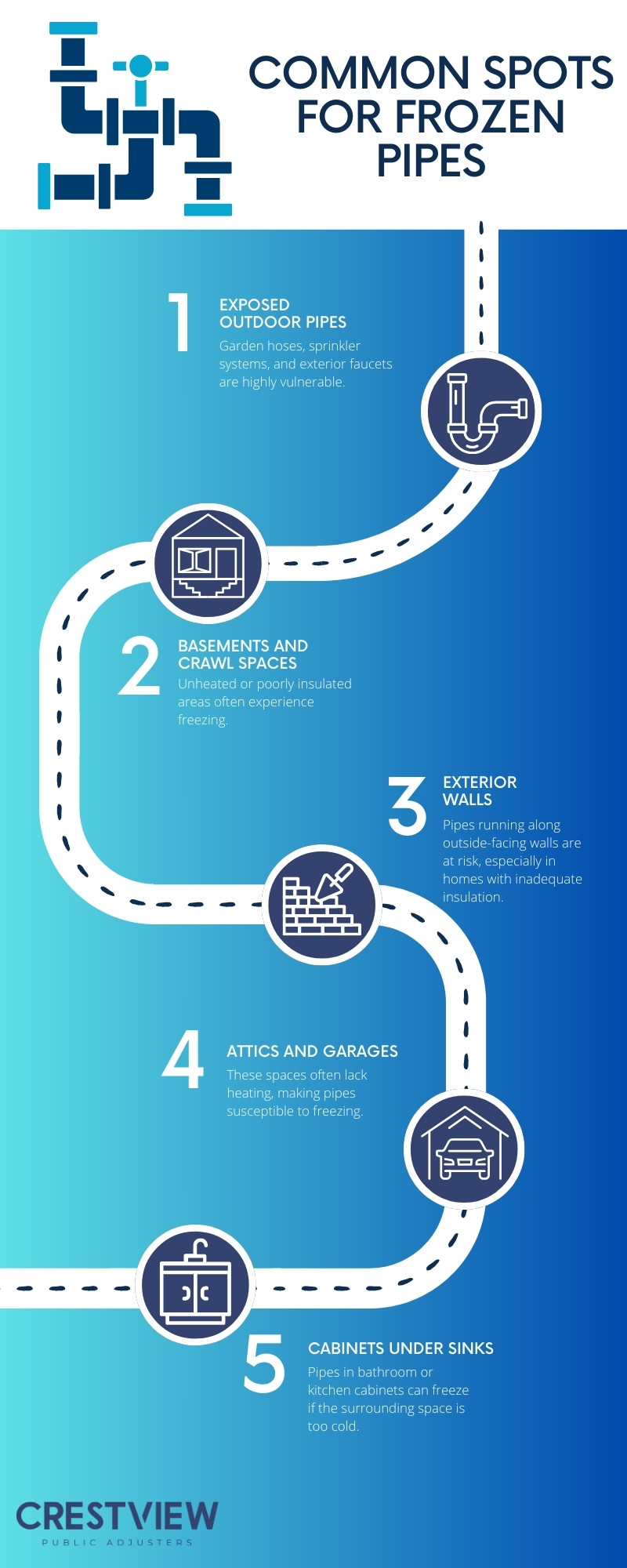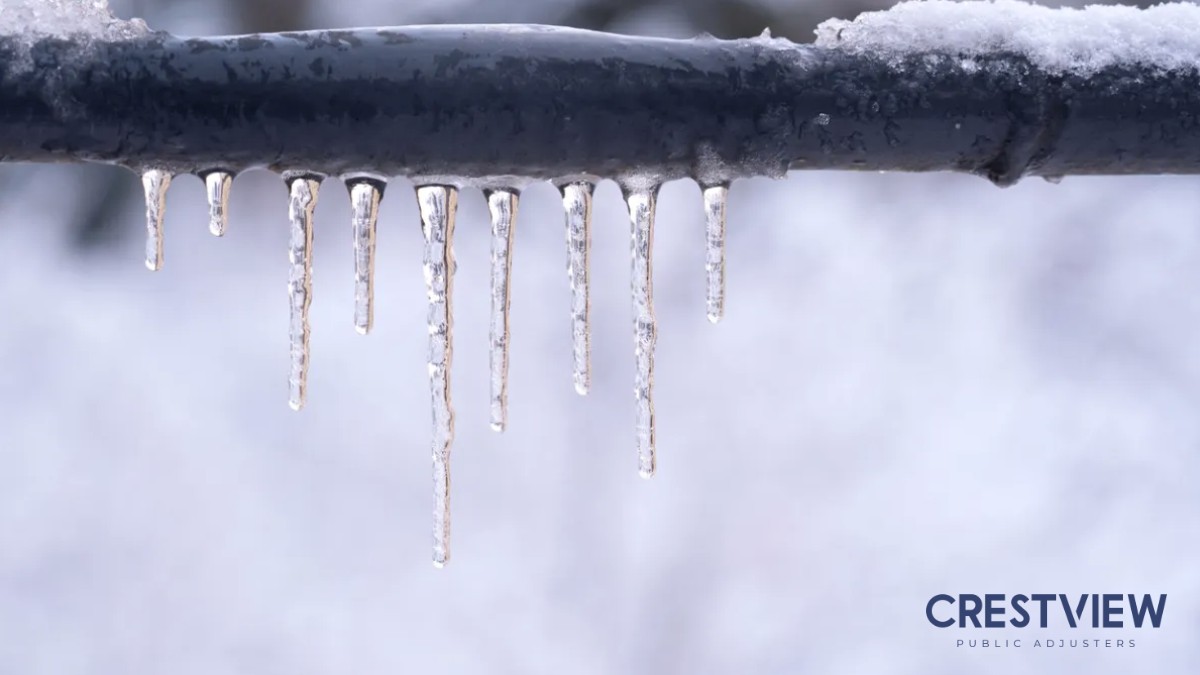Key Points:
- Frozen pipes can lead to costly damage, but identifying them early can prevent major issues.
- Common signs include reduced water flow, frost on pipes, and strange odors from drains.
- Methods to locate frozen pipes include checking exposed plumbing, listening for unusual sounds, and testing water flow in different fixtures.
Frozen pipes can be found by checking for reduced water flow, inspecting exposed pipes for frost, and listening for unusual sounds in your plumbing system. They are most common in unheated areas like basements, crawl spaces, and exterior walls. Identifying the blockage early can help prevent costly repairs from burst pipes and water damage.
Why Do Pipes Freeze?
Cold temperatures cause water inside pipes to freeze and expand, leading to increased pressure and potential pipe bursts. According to the Insurance Institute for Business & Home Safety, burst pipes are among the leading causes of property damage during winter, with average claims exceeding $10,000. The risk is higher in uninsulated areas, and policyholders often face challenges when filing claims for these damages.
Factors That Increase the Risk of Frozen Pipes:
- Sudden temperature drops – A quick decline in temperature can freeze pipes overnight.
- Poor insulation – Pipes in exterior walls or attics are more vulnerable.
- Low thermostat settings – Keeping the heat too low increases the risk of freezing.
- Extended inactivity – If water isn’t flowing for long periods, it can freeze inside the pipes.
What Are the Signs of a Frozen Pipe?
Spotting a frozen pipe early can prevent severe damage. Look for these warning signs:
- No or slow water flow – If you turn on a faucet and only a trickle comes out, a pipe may be frozen.
- Frost on exposed pipes – Visible frost or ice buildup is a clear sign of freezing.
- Unusual smells – If you notice a foul odor from a faucet or drain, ice may be blocking proper ventilation.
- Bulging pipes – Expansion due to freezing water can cause pipes to bulge.
If any of these signs appear, act quickly to prevent the pipe from bursting.
Where Do Pipes Freeze Most Often?
Understanding where pipes are most likely to freeze can help you locate the problem faster.

How to Identify the Exact Location of a Frozen Pipe
Finding the frozen section requires a systematic approach.
- Check exposed pipes first. Look for frost or bulging on visible pipes in basements, attics, and exterior walls.
- Turn on multiple faucets. If only one faucet has reduced flow, the frozen pipe is likely close to that fixture. If multiple faucets have issues, the blockage may be in the main supply line.
- Listen for unusual sounds. Tapping or whistling noises in the plumbing system can indicate ice buildup restricting water flow.
- Feel along the pipes. A frozen section will be colder to the touch compared to other parts.
- Check the water meter. If the meter isn’t moving while faucets are open, it may indicate a frozen main line.
What to Do If You Find a Frozen Pipe
Once you’ve found the frozen section, act fast to prevent a burst pipe.
Safe Methods to Thaw a Frozen Pipe:
- Use a hairdryer or heat lamp. Aim warm air at the pipe, starting near the faucet and moving toward the blockage.
- Wrap the pipe with warm towels. Soaking towels in hot water and applying them can gradually thaw the ice.
- Turn up the heat. Raising the indoor temperature can help warm frozen pipes inside walls.
- Let faucets drip. Running a small stream of water through affected pipes can help thaw them faster.
What NOT to Do:
- Never use an open flame. This can damage pipes and create a fire hazard.
Avoid excessive pressure. Don’t force water through a frozen pipe—it could cause it to burst.

How Public Adjusters Help With Frozen Pipe Claims
If a frozen pipe leads to water damage, filing an insurance claim can be complicated. Many homeowners struggle with claim denials or low payouts due to policy exclusions and unclear terms. This is where a public adjuster becomes invaluable.
Why Work With a Public Adjuster?
- Maximize your claim payout. Adjusters ensure you receive full compensation for damages.
- Handle the complex paperwork. They navigate policy language and submit necessary documentation.
- Negotiate with the insurance company. Insurers often minimize payouts, but a public adjuster fights for what you’re owed.
Get Expert Help for Frozen Pipe Claims in New York, New Jersey, and Florida
Dealing with frozen pipe damage? Crestview’s public adjusters specialize in frozen pipe claims and help homeowners in New Jersey, New York, and Florida secure fair insurance settlements. Don’t risk an undervalued claim—contact Crestview today to get the compensation you deserve.

